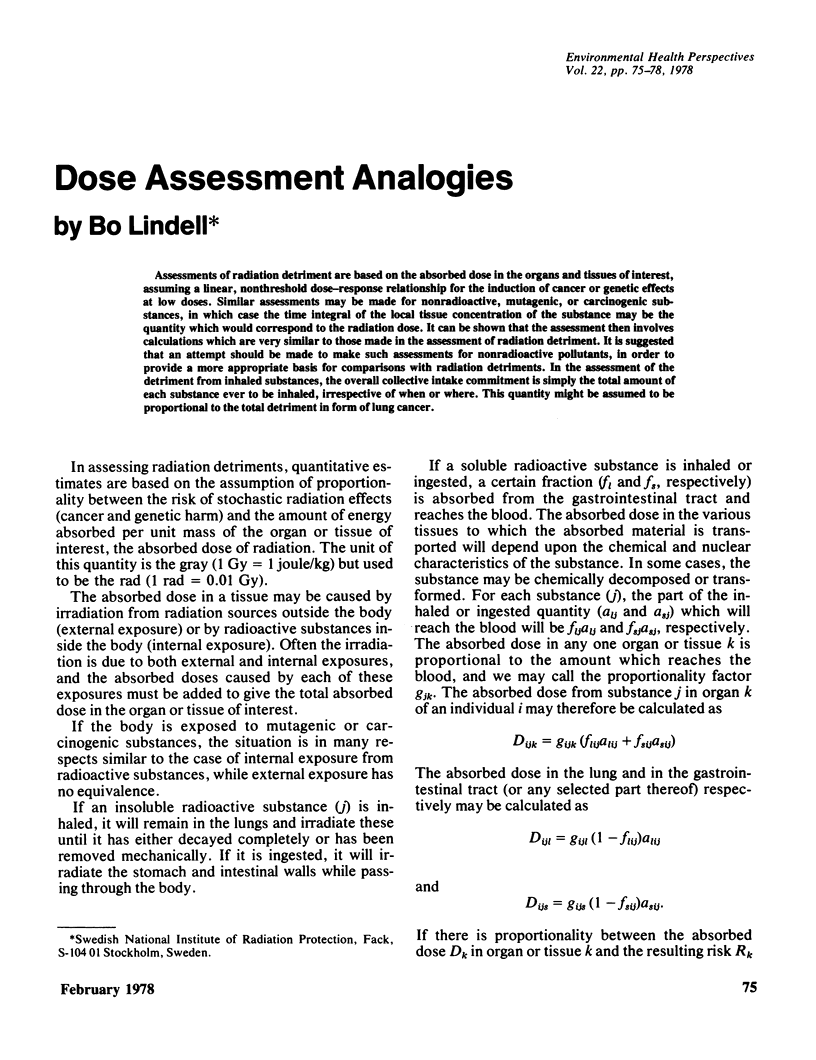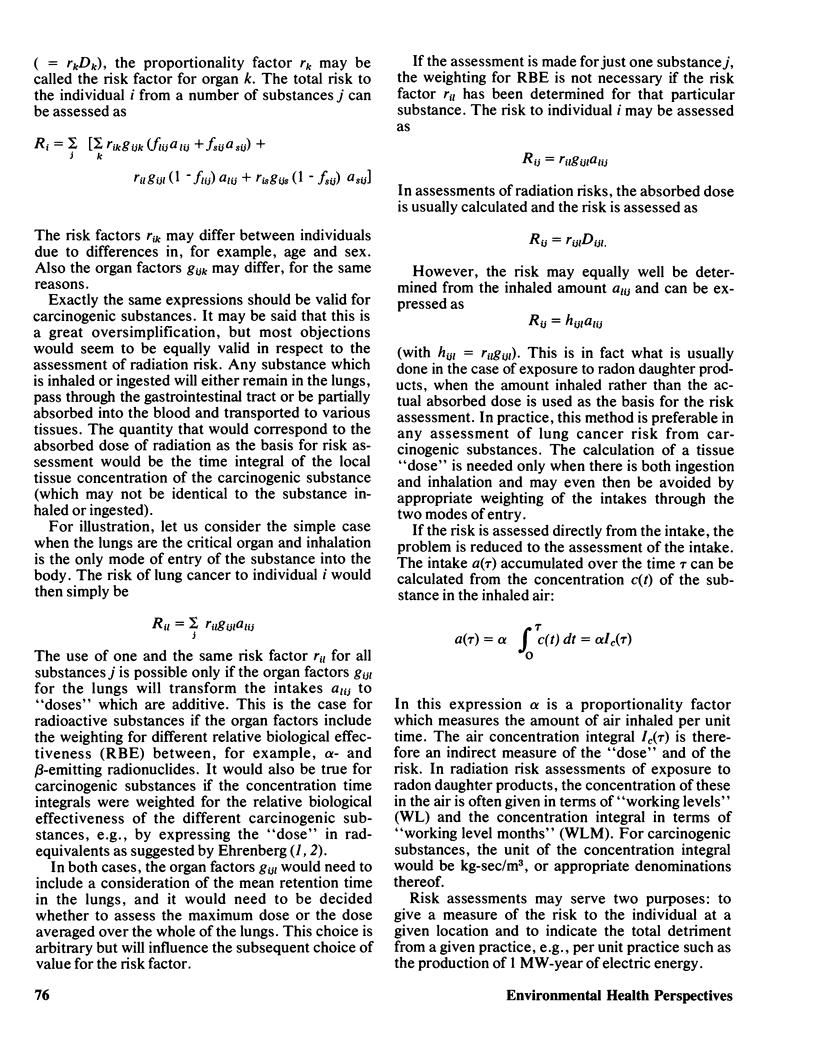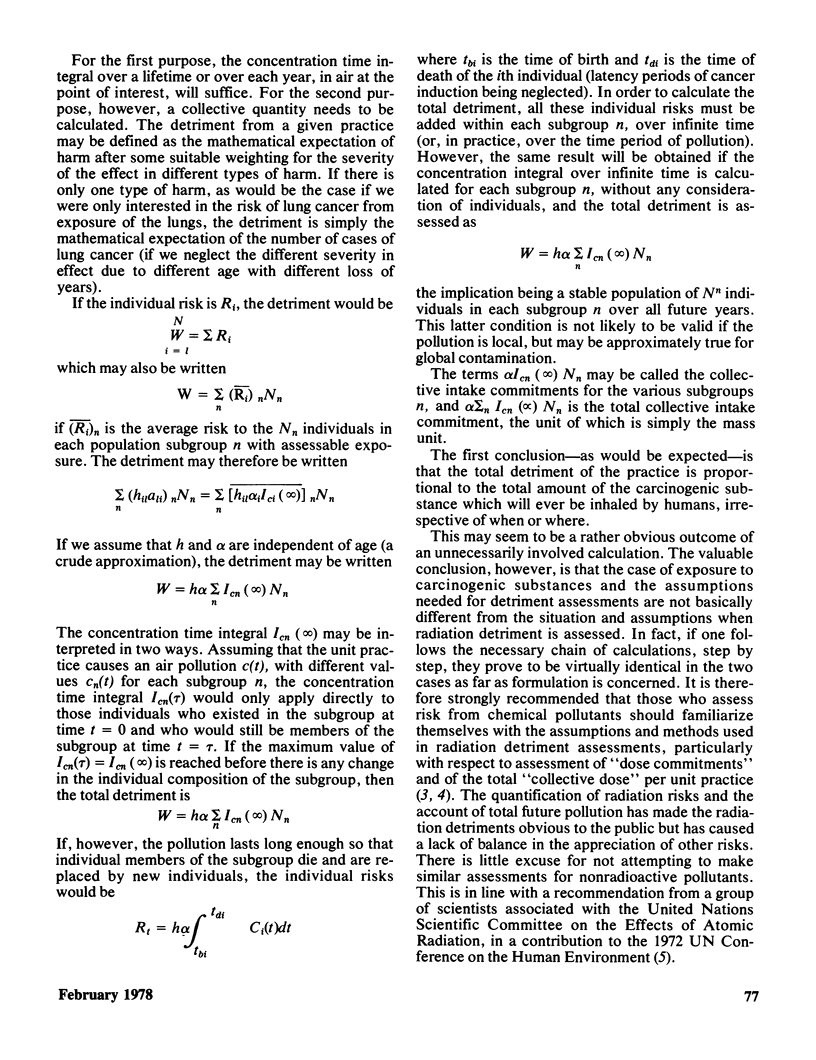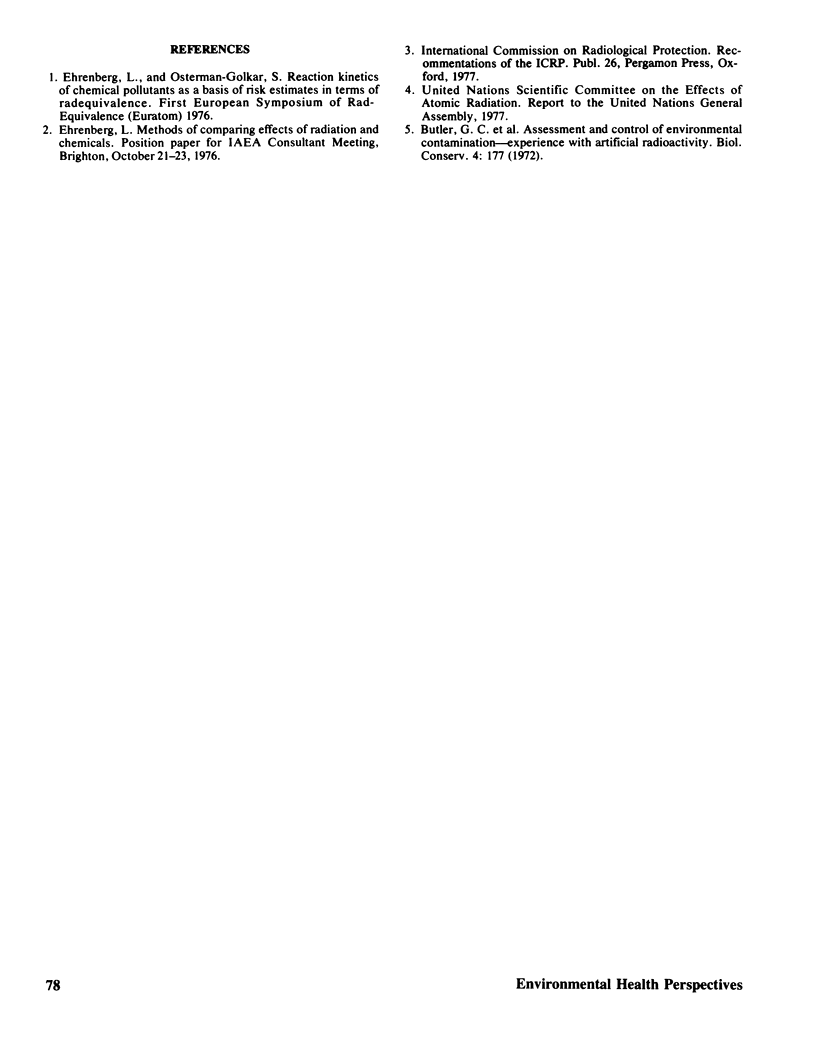Abstract
Assessments of radiation detriment are based on the absorbed dose in the organs and tissues of interest, assuming a linear, nonthreshold dose--response relationship for the induction of cancer or genetic effects at low doses. Similar assessments may be made for nonradioactive, mutagenic, or carcinogenic substances, in which case the time integral of the local tissue concentration of the substance may be the quantity which would correspond to the radiation dose. It can be shown that the assessment then involves calculations which are very similar to those made in the assessment of radiation detriment. It is suggested that an attempt should be made to make such assessments for nonradioactive pollutants, in order to provide a more appropriate basis for comparisons with radiation detriments. In the assessment of the detriment from inhaled substances, the overall collective intake commitment is simply the total amount of each substance ever to be inhaled, irrespective of when or where. This quantity might be assumed to be proportional to the total detriment in form of lung cancer.
Full text
PDF





